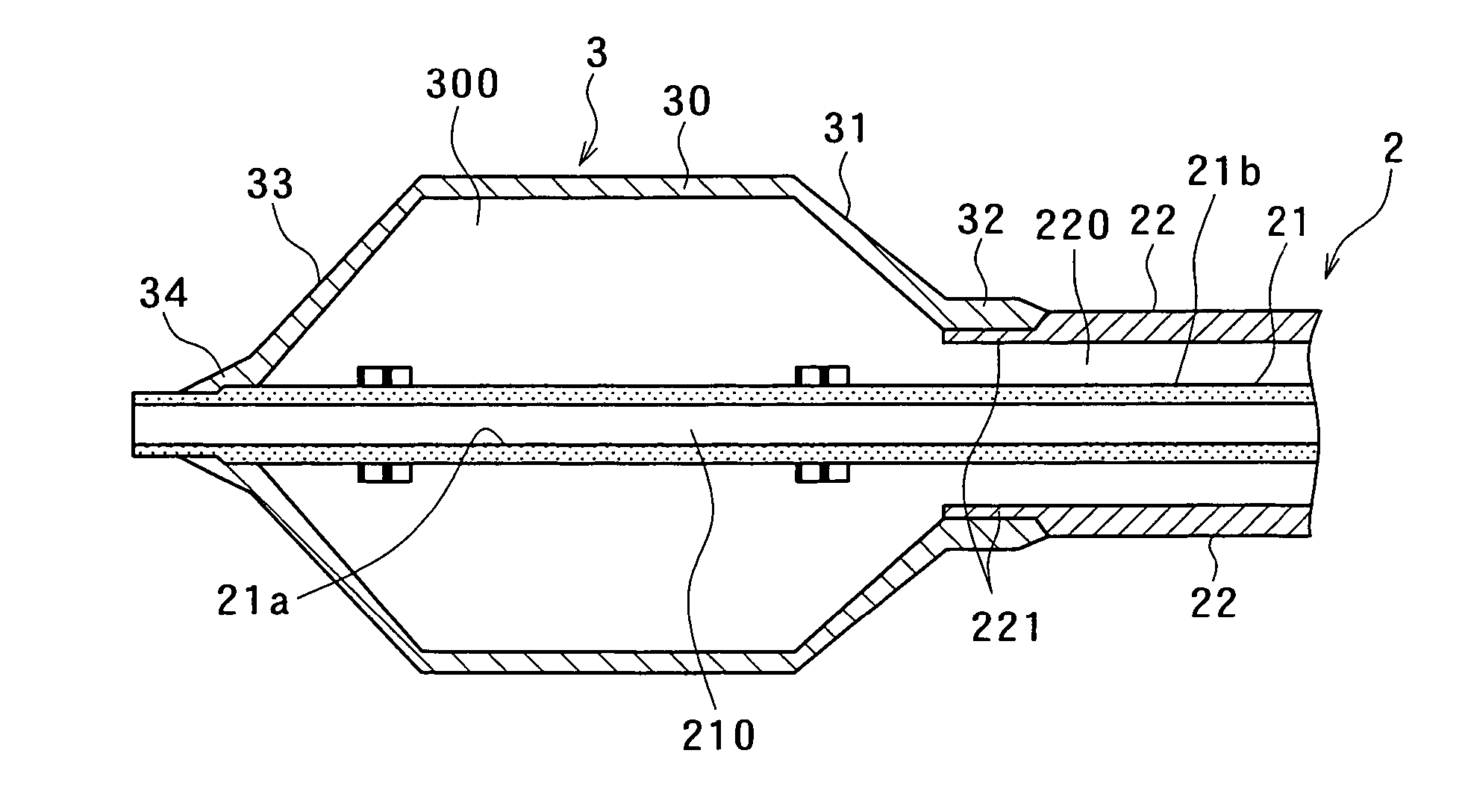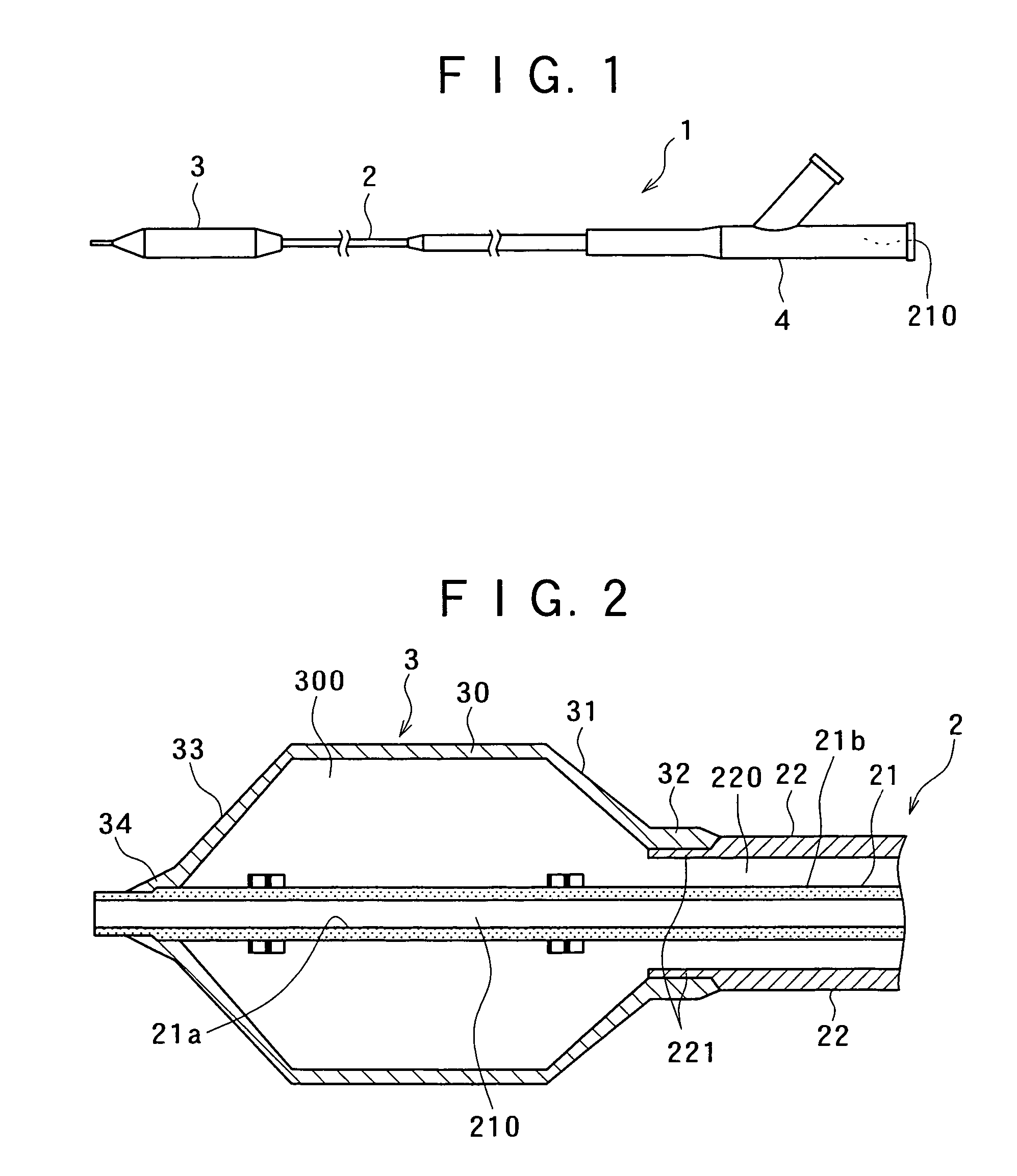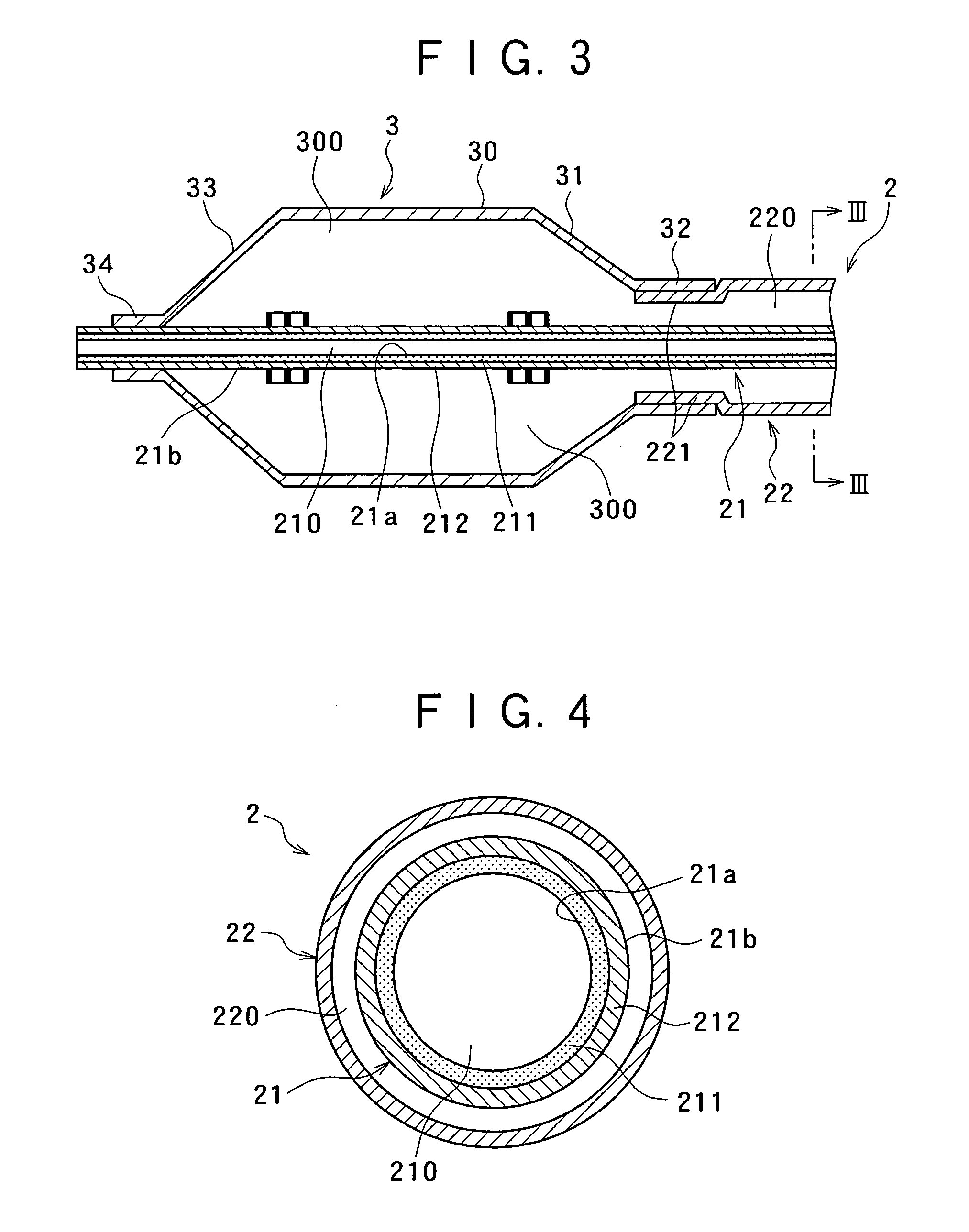Catheter with expandable member
a technology of expandable parts and catheters, which is applied in the field of catheters with expandable parts, can solve the problems of poor adhesion properties and properties of polyolefins, poor flexibility, and higher hardness of polyolefins, and achieves excellent flexibility, low sliding resistance of guide wires, and safe and good operation properties
- Summary
- Abstract
- Description
- Claims
- Application Information
AI Technical Summary
Benefits of technology
Problems solved by technology
Method used
Image
Examples
example 1
[0076]
[0077] Compounding of 80 parts by weight of a polyamide elastomer resin (a polyether-ester block amide containing polyether soft segments and polyamide hard segments joined to each other through ester linkage; having a Shore D hardness of 54) and 20 parts by weight of carbon nanofibers (average outside diameter: about 150 nm; length: about 10 to 20 μm; produced by Showa Denko K. K.) was conducted by use of a twin-screw kneader, followed by extrusion and cutting, to obtain pellets of a composite material having a carbon nanofiber content of 20% by weight.
[0078]
[0079] Mixing of 30 parts by weight of the pellets of the carbon nanofiber-containing composite material and 70 parts by weight of pellets of nylon 12 (Shore D hardness: 72) was conducted by the ordinary method, and the resultant mixture was extruded, to produce a single-layer tube inner tube having an outside diameter of 0.56 mm and an inside diameter of 0.43 mm.
[0080] The amount of the carbon nanofiber (based on the t...
example 2
[0081] Compounding of 90 parts by weight of nylon 12 (Shore D hardness: 72) and 10 parts by weight of carbon nanofibers (average outside diameter: about 150 nm; length: about 10 to 20 μm; produced by Showa Denko K. K.) was conducted by use of a twin-screw kneader, followed by extrusion and cutting, to obtain pellets of a composite material having a carbon nanofiber content of 10% by weight.
[0082] With the carbon nanofiber-containing composite material used as a material for forming an inner layer and with a polyamide elastomer resin (a polyether-ester block amide containing polyether soft segments and polyamide hard segments joined to each other by ester linkage; having a Shore D hardness of 54) used as a material for forming an outer layer, copper wire covering was conducted by use of a multi-layer extruding machine, to form on a copper wire an inner tube of a two-layer tube structure having an outside diameter of 0.56 mm and an inside diameter of 0.43 mm (the outer layer having a...
example 3
[0095] Compounding of 95 parts by weight of nylon 12 (Shore D hardness: 72) and 5 parts by weight of carbon nanofibers (average outside diameter: about 150 nm; length: about 10 to 20 μm; produced by Showa Denko K. K.) was conducted by use of a twin-screw kneader, followed by extrusion and cutting, to obtain pellets of a composite material containing 5% by weight of the carbon nanofibers.
[0096] The carbon nanofiber-containing composite material was extruded by the ordinary method, to produce an inner tube of a single-layer tube structure having an outside diameter of 0.56 mm and an inside diameter of 0.43 mm.
PUM
| Property | Measurement | Unit |
|---|---|---|
| arithmetical mean roughness | aaaaa | aaaaa |
| diameter | aaaaa | aaaaa |
| diameter | aaaaa | aaaaa |
Abstract
Description
Claims
Application Information
 Login to View More
Login to View More - R&D
- Intellectual Property
- Life Sciences
- Materials
- Tech Scout
- Unparalleled Data Quality
- Higher Quality Content
- 60% Fewer Hallucinations
Browse by: Latest US Patents, China's latest patents, Technical Efficacy Thesaurus, Application Domain, Technology Topic, Popular Technical Reports.
© 2025 PatSnap. All rights reserved.Legal|Privacy policy|Modern Slavery Act Transparency Statement|Sitemap|About US| Contact US: help@patsnap.com



